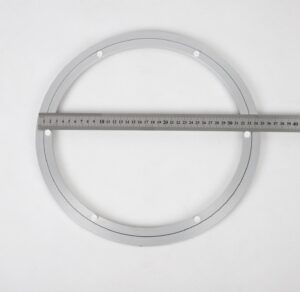The origin of the table turntable is intertwined with the dual pursuit of sharing and hygiene in Eastern and Western civilizations. During the plague in Northeast China in 1910, Zheng Xingwen, a chef from Harbin, added a vertical axis and a circular dining table in the center of the Eight Immortals Table to reduce the spread of germs, which became the prototype of the turntable. This design was later proven to be epoch-making – in the 1950s, Johnny Kan, a chef in San Francisco’s Chinatown, improved it into a metal ball bearing structure, making the turntable table a standard feature of Chinese restaurants, solving the problem of picking up dishes for large gatherings, and was hailed as the “democratic revolution in the catering industry.”
Interestingly, similar devices have long existed in the West: in the 18th century, Britain invented the “Dumbwaiter” to cope with the economic crisis, and in 1917, Vanity Fair first used “Lazy Susan” to describe the rotating tray. But what really promoted the turntable culture to the world was the modernization of the Chinese cuisine’s tradition of communal dining. Today, from family dining tables to Michelin restaurants, turntables carry not only food but also the inclusive wisdom that transcends civilizations – they allow the order of respect and hierarchy to dissolve as they rotate, creating a wonderful resonance between the Eastern philosophy of “sharing food” and Western efficiency.

